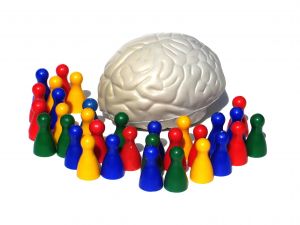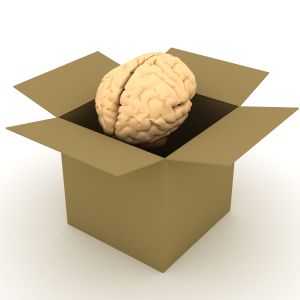The Atkinson-Shiffrin Multi-Store Model of Memory
What Is It?
The Atkinson-Shiffrin memory model suggests that memory consists of three components, the sensory register, long term store and short term store. The three components each hold and process information.
The model was proposed in 1968 by two American psychologists, Richard Atkinson and George Shiffrin. The model resulted in many other similar models being created by other psychologists, and is sometimes called the modal model because of that.
The basic theory is that all external input is detected by the sensory register, and of that, all information consciously noticed is moved into the short term store. Some of this information, if effectively encoded through techniques such as rehearsal, will be moved into the long term store.
Some information may be moved directly into the long term store from the sensory register and may not need effort to remember, for example a traumatic event.

Sensory Register
The Atkinson-Shiffrin multi-store model proposes that there is an entry point for all new information into memory. The time spent in the sensory register is very brief, being just hundreds of milliseconds. The information received by the sensory register is visual, and is everything you see, even if you don't consciously pay attention to it. Any information that is consciously noticed by a person moves into the short term store.
For example, if looking at a tree, you may notice that one of the leaves is yellow, not green. By noticing that, the information has been moved to your short term store. If someone were to ask you two seconds later how many yellow leaves were on the tree, you would be able to answer that there was one yellow leaf, because that was a feature you noticed.
But if that person was to ask you whether there were ants on the tree, you would not know the answer, the reason being that although your sensory register would have noticed the ants (or lack of) on the tree, you did not consciously notice the information and it was quickly discarded.
Atkinson and Shiffrin also allowed for the possibility that each sense (for example, auditory and visual) may have a different sensory register.
Short Term Store
According to Atkinson and Shiffrin's model, the short-term store is a 'temporary working memory' that holds every piece of information a person is aware of at a time. Unless a conscious effort is made to keep information in the short term store (or short term memory) then most information will disappear within 30 seconds.
By using conscious effort to remember the information, the information may pass through to the long term store, where it will be remembered for a lot longer than it would have been if in the short term store. If no effort is taken to remember the information, it will usually decay and disappear.

Long Term Store
The long-term store holds more permanent information, which is stored in a highly organised way.
Some personal examples for me include:
-I can still say some colours in Japanese. I learned them in prep.
-When I was six I spent weeks saving up $2 to buy a packet of bubblegum, and when I went to the supermarket it was on special and they scanned the wrong price, so I got it free.
Although most information in the long term memory never decays, and can be kept an entire lifetime, sometimes a person can fail to retrieve the information needed because they are not looking in the right way.
Further research by different experimenters on the long term memory has resulted in long term memory no longer being a single component of memory. It is now thought that different types of long term memories, such as episodic and procedural memory, process and store different types of information.
Episodic memory is a memory of a particular event. An example of episodic memory could be your wedding day, your first day of school, or a time you witnessed a robbery.
Procedural memory is a memory of how to do something, for example, type, ride a bike or turn on a light.








